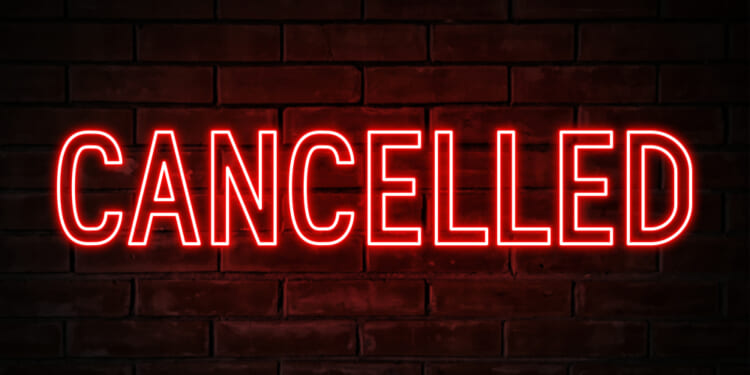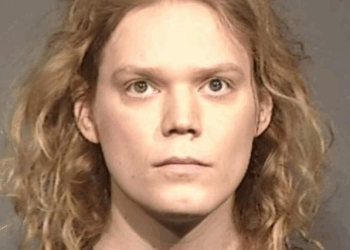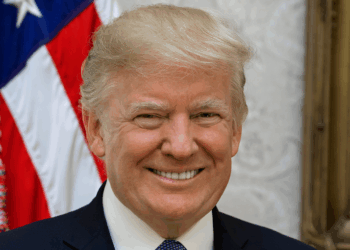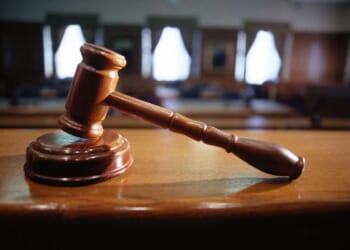Debates about Charlie Kirk’s work and legacy inevitably involve the issue of free speech. Both supporters and opponents of Kirk would probably agree that he devoted his life to bringing conservative ideas into institutions that had been relatively isolated from or hostile to such ideas. Kirk’s activism highlighted, for the political right, the threat to free speech posed by the left. And yet, shortly after Kirk’s assassination, the right has responded with efforts or desires to punish leftist speech expressing various types of approval of Kirk’s death.
This conflict over speech reactions to Kirk’s death, as well as the anti-censorship focus of Kirk’s activism, reflects a broader conflict occurring within American society. For years, conservatives have complained about the repressive speech attitudes of the progressive left. Indeed, in the wake of the COVID-19 pandemic and the George Floyd killing, speech censorship by the left escalated. The right responded with cries of liberty infringements, charging progressives with undermining clear principles of free expression.
Such principles sometimes involve the First Amendment, which only applies when the government actually restricts speech. Most times, however, the issues are simply cultural or social, with the debate involving whether certain speech should be socially tolerated without any adverse consequence.
In truth, battles over freedom of expression have occupied the social and cultural terrain ever since the Supreme Court entered the free speech arena. Just over a century ago, Justice Oliver Wendell Holmes in his dissent in Abrams v. United States (1919) articulated his famous “marketplace of ideas” metaphor to define the First Amendment’s free speech doctrine. According to Holmes, free speech was necessary not just as an element of individual autonomy but as a means for a democratic society to arrive at the social truth necessary for self-government. Holmes arrived at this formulation through the guidance of liberals like Zechariah Chafee. This approach found further support from liberal Justice Louis Brandeis, who in Whitney v. California likewise valued free expression because it was indispensable to the “discovery and spread of political truth.”
Although Holmes’s marketplace of ideas concept did not prevail in Abrams, failing to reverse the conviction of anarchists calling for a general strike to oppose the Wilson administration’s dispatch of U.S. troops to Russia, the concept would eventually convince the Court a half-century later to articulate more speech-protective doctrines for the First Amendment.
Despite the initial liberal support of the “marketplace of ideas,” progressives during the Woodrow Wilson presidency took a repressive approach to speech critical of the United States’ military involvement in World War I. Through the use of the Espionage and Sedition Acts, both of which carried censorship provisions, the Wilson government prosecuted thousands of protesters. In 1919, Attorney General A. Mitchell Palmer launched a two-year “Red Scare” hunt, highlighted by mass arrests and hasty prosecutions of communists, socialists, and anarchists. It was the ensuing conservative Harding/Coolidge administration that stopped this attack on dissidents, advocating a policy of compassion and normalcy.
Although conservatives were not generally the free speech defenders during the 1920s that liberals were, the New Deal progressives soon reverted to the censorial attitudes of their Wilsonian predecessors. When the New Deal agenda came under fierce opposition in the mid-1930s, President Roosevelt and his progressive supporters unleashed congressional investigative committees on those opponents. The history of the Black Committee presents a particularly chilling tale. Chaired by Senator Hugo Black and established in 1935, in the midst of various New Deal setbacks, the committee began investigating lobbying activities of political opponents, soon leading to a massive surveillance campaign aimed at New Deal critics, including journalists and lawyers. With the help of the Roosevelt administration, Black used the Federal Communications Commission, as well as dragnet subpoenas, to obtain the private telegrams of political opponents. The Department of the Treasury was also pressured to monitor tax returns of those opponents, including William Randolph Hearst, formerly a Roosevelt ally in 1932 but now a critic of the New Deal.
During the Cold War era of the 1950s and 1960s, conservatives, in turn, became dismissive of free speech concerns, pushing severe penalties against persons advocating communist ideas or participating in communist organizations. In Dennis v. United States (1951), for instance, the Supreme Court upheld the Smith Act, which outlawed advocating the overthrow of the federal government or participating in any organization advocating such overthrow. Many conservatives also stood behind the Democratic-led House Un-American Activities Committee’s blacklisting of suspected communists. And a 1953 Alabama law required publishers to state whether any authors referenced in a book had ever held leftist beliefs.
Moreover, from the 1930s through the 1950s, conservatives pressured Hollywood to abide by content codes that restricted violent and sexually oriented programming. This opposition to such programming would continue for the rest of the 20th century, with conservatives trying to restrict the marketing of violent video games to children (struck down in Brown v. Entertainment Merchants Assn. [2011]) and the media distribution of sexually explicit material (struck down in United States v. Playboy Entertainment [2000]).
It was during the 1960s that free speech found aggressive defenders on the political left. The Free Speech Movement, emanating from college campuses like the University of California at Berkeley, coincided with the sexual and cultural revolutions sweeping the country. Protesting the war in Vietnam and supporting the civil rights crusade, liberals pushed for expansions of speech protections. This crusade, beginning with the infamous New York Times v. Sullivan (1964) decision that granted the media protection from defamation lawsuits, brought about a great liberalization of First Amendment freedoms in the courts. Later, in the Pentagon Papers case (1971), the Supreme Court even refused to stop publication of secret government documents relating to the Vietnam War. These expansions of free speech protections were generally resisted by conservatives.
In fact, as the media increasingly rebelled against the restraints of traditional cultural values, conservatives answered with calls for censorship or other controls. Throughout the 1960s and 1970s, conservatives generally supported laws restricting the dissemination of obscene or pornographic materials, even though the majority of those laws were later struck down by the courts. In Cohen v. California (1971), traditional conservatives failed to convince the Court that expressions of profanity in public spaces could be prohibited. However, the Court did uphold restrictions on indecent speech in the broadcast media in FCC v. Pacifica Foundation (1978).
In the 1980s, the Moral Majority only intensified the conservative attack on public speech that violated traditional moral values. Censorship crusades targeted violent music lyrics and indecent or blasphemous art funded by the National Endowment for the Arts. The traditional-values focus of conservatives during the Reagan era also spawned efforts to censor unpatriotic speech, such as the burning of the U.S. flag. But laws prohibiting such actions were struck down in Texas v. Johnson (1989) by a Court now firmly committed to free speech.
It was the 1990s that brought a shift in the winds of censorship promotion. Having firmly opposed the censorship impulses of conservatives from the 1960s through the 1980s, many liberals now changed directions. Under the umbrella of political correctness, the left began engaging in extensive censorship activities. Speech codes were adopted and enforced at the nation’s universities. Classic literature like The Adventures of Huckleberry Finn, Catcher in the Rye, and To Kill a Mockingbird were censured because of language that violated politically correct mandates. Despite the Supreme Court’s judgment in R.A.V. v. City of St. Paul (1992), hate speech laws were enacted imposing broad restrictions against vaguely defined speech that offended or attacked certain groups.
Much of this PC censorship occurred in higher education. A professor at the University of Missouri who criticized an opinion by Supreme Court Justice Thurgood Marshall was investigated; a Harvard professor was sanctioned for using the term “Indian” instead of “Native American” in 1991; several schools punished students for expressing a religious objection to homosexuality; Santa Monica College censured a professor who argued that ethnic and gender-based studies “sidetrack students who could otherwise gain useful disciplines or skills.” Many universities introduced codes banning speech that could lead to a “demeaning” atmosphere, and hundreds of schools prohibited any speech that might stigmatize or victimize an individual on the basis of any one of numerous criteria.
The political correctness of the 1990s led directly to the “wokeism” of the 2010s. Although not violative of the First Amendment, since such censorship activities were generally accomplished outside the realm of government, a new “cancel culture” threw a suffocating blanket over social and cultural expression.
The term “cancel culture” relates to the social and cultural backlash against unwanted expression that has occurred primarily over the past 10 years. This backlash originated from the left and sought to punish—by “deplatforming” and even “debanking”—anyone expressing speech that criticized or contradicted progressive/leftist ideas. The Foundation for Individual Rights and Expression (FIRE) has exposed and publicized the many instances of cancel culture occurring in the nation’s universities.
COVID and the George Floyd killing in 2020 dramatically intensified this cancel culture. Individuals expressing outrage at the urban violence occurring in the wake of the killing found themselves branded as racists. The organization Black Lives Matter used accusations of racism to silence critics and command adherence to its race-based agenda. Regarding the pandemic, the federal government’s efforts to censor social media opponents of its vaccine and masking regime were exposed in the Supreme Court case of Murthy v. Missouri (2024). More generally, people lost jobs and incurred reputational attacks for opposing the government’s response to COVID.
Into this arena, then, stepped Charlie Kirk, injecting conservative ideas into academic settings that had often been antagonistic to those ideas. Kirk preached free speech, as conservatives generally have been doing for much of the past 10 to 15 years. Since the Obama presidency at least, the left has taken the more aggressive approach in restricting and repressing the speech it disfavors. In response, conservative organizations like Turning Point USA—the organization founded by Kirk—have sought to challenge the cultural control of speech by the left.
In the current cultural and political atmosphere, liberals occupy the anti-speech position and conservatives the pro-speech position. But history has demonstrated that those positions have swung back and forth. And a danger in the aftermath of the Kirk assassination is that conservatives will embrace a censorial reaction toward leftist ideas. Attorney General Bondi, shortly after the assassination and in response to social media posts of leftists celebrating Kirk’s murder, announced that the government would go after hate speech directed at conservatives. Although some approved this stance, many other conservatives objected, arguing that they had long suffered under the liberal use of hate speech restrictions unfairly aimed at them and that they did not want to give future credence to such restrictions. Elsewhere, leftists celebrating the death of Kirk found themselves fired from their jobs, particularly in the education field—which seemed to contradict the free speech message to which Kirk had long committed himself.
The battle against censorship ands to maintain a vibrant marketplace of ideas continues. Many setbacks and reversals occur, and neither side is immune from the lure of censorship. Many of the same people protesting ABC’s suspension of Jimmy Kimmel from Jimmy Kimmel Live! because of remarks Kimmel made about Charlie Kirk not long ago called for the banning of President Trump from social media. But the endurance of democracy and freedom in America demonstrates that the benefits of free expression, as Charlie Kirk so often advocated, and as Oliver Wendell Holmes asserted more than a century ago, justify the constant struggle to preserve it.




![Hegseth Demands Fitness Requirements, Says 'Fat Troops' 'Not Who We Are' [WATCH]](https://teamredvictory.com/wp-content/uploads/2025/09/Hegseth-Demands-Fitness-Requirements-Says-Fat-Troops-Not-Who-We-350x250.jpg)






